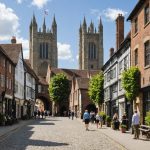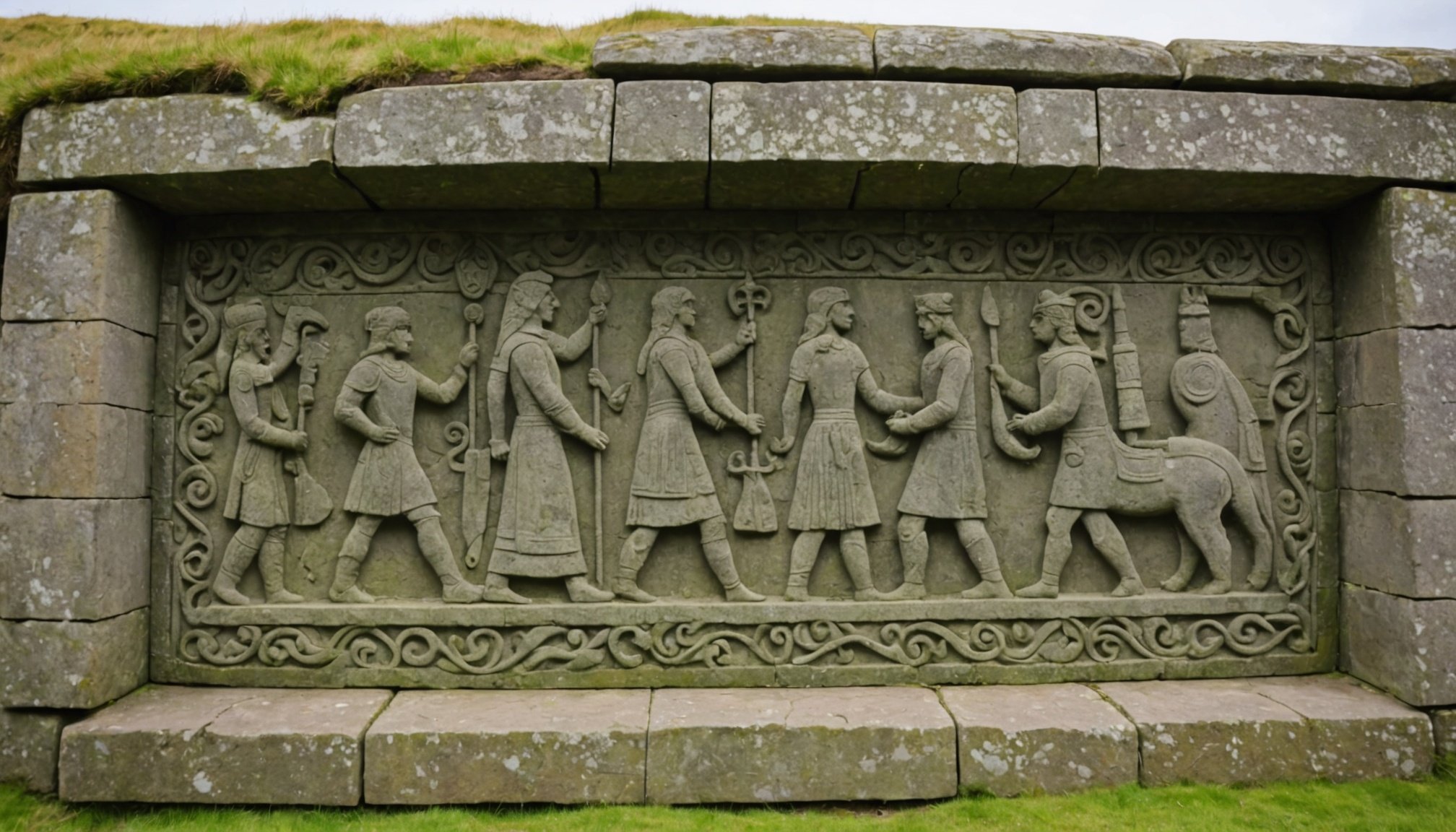Overview of Northumberland’s Ancient Stone Carvings
Ancient stone carvings in Northumberland hold great significance, offering insights into the area’s rich history. These carvings, etched into stone, are more than rudimentary artworks; they are vital artifacts that shed light on the daily lives, beliefs, and customs of past civilizations. Northumberland’s extensive archaeological landscape is renowned for harboring a multitude of these historic treasures. The region is dotted with carvings, some of which date back thousands of years, each contributing to our understanding of ancient times.
The carvings are often embedded within rock faces and serve as a testament to the artistic and cultural expression of early occupants. The detailed motifs and patterns found across Northumberland vary, reflecting the diverse influences and styles adopted over different periods. Such carvings play a crucial role in illustrating the region’s past.
Topic to read : Explore Top Destinations to Experience Genuine UK Folk Music
These ancient inscriptions deeply impact Northumberland’s local culture and heritage today. They form part of the collective identity of the area’s communities, fostering a sense of continuity with the past. Moreover, they enhance cultural tourism, drawing enthusiasts and scholars fascinated by history and archaeology. Understanding these carvings not only enriches one’s appreciation of history but strengthens the region’s cultural fabric.
Notable Sites for Ancient Stone Carvings
Northumberland boasts some of the UK’s most notable stone carving sites, each offering unique insights into ancient cultures. These sites serve as engaging visitor attractions, appealing to history buffs and casual tourists alike.
Have you seen this : Explore the Enduring Heritage of British Ceramics: Your Ultimate Guide to Crafting an Enriching Guided Tour Experience
Site 1: The Known Location
Of all the ancient carvings locations, the Known Location stands out for its well-documented historical context. It is easily accessible, offering ample visitor facilities, including guided tours and information plaques. The site features notable carvings, such as spirals and concentric circles, which historians believe represent cosmic symbols or spiritual beliefs.
Site 2: The Hidden Gem
As its name suggests, the Hidden Gem offers a more secluded experience. Discovered only recently, it enchants visitors with its unique features, inviting a sense of adventure. This site is ideal for those who love exploring untouched parts of the archaeological landscape. Visitors are recommended to bring a guidebook and proper hiking gear to best explore this hidden treasure.
Site 3: The Tourist Favorite
Often bustling during peak seasons, the Tourist Favorite captivates visitors with its stunning carvings and breathtaking views. It’s best visited in the early morning for a serene experience. Unlike other sites, its carvings are noted for their geometric precision, adding to its popularity.
Historical Background
The history of stone carvings in Northumberland is a tapestry reflecting a progression of fascinating cultural stages. Beginning around the Neolithic period, these carvings were influenced by migratory patterns and the evolution of ancient societies. Early inhabitants of the region employed various techniques to etch symbolic representations into stone, intertwining art with their spiritual and everyday lives.
Each carving is a window into the past, displaying motifs that illustrate the cultural asymmetries and exchanges across different eras. The region’s archaeological fabric showcases influences from Celtic, Roman, and Anglo-Saxon civilizations. Each left a distinct imprint through these expertly crafted stone surfaces, showcasing their cultural narratives and belief systems.
Moreover, local communities have played a key role in preserving Northumberland’s archaeological heritage. Their commitment not only safeguards the stone carvings but also supports storytelling efforts that bring historical narratives to life. Recognising these elements is vital for maintaining the richness of Northumberland’s history.
The contributions of ancient stone carvings hold continued significance. They significantly enhance our understanding of ancient cultures and further enrich our knowledge of the diverse amalgams of societal influences within Northumberland archaeology.
Thematic Exploration of Carvings’ Meanings
Ancient stone carvings in Northumberland are rich with cultural symbolism, provoking curiosity about their meanings. The motifs often depict common themes such as spirals, circles, and interconnected lines, which may represent spiritual beliefs, celestial maps, or community rituals. Each carving is a story of ancient life etched in stone, whispering the secrets of past civilizations.
Historians and archaeologists offer diverse perspectives on these carvings, with some suggesting they were tools for storytelling or communication, while others see them as expressions of art and spirituality. The combination of patterns reveals a narrative that speaks to ancient practices and beliefs, covering everything from daily life to profound cosmology.
Connections to ancient practices can be seen in the repetitive use of certain designs. Contemplating these engravings illuminates the cultural symbolism behind them, providing an intriguing glimpse into how early societies understood their world. Observing them with an analytical eye reveals layers of historical and cultural complexities, enriching our understanding of ancient Northumberland.
This thematic exploration of carvings underscores the importance of interpreting these historical artifacts, fostering a deeper appreciation for their cultural significance and the rich tapestry of history they represent.
Tips for Visiting Ancient Stone Carvings
Exploring Northumberland’s ancient sites offers a thrilling journey into the past. When planning a visit, consider these best practices to enhance your experience.
Begin by researching the travel guide for Northumberland to identify key ancient sites you’d like to visit. This ensures a well-planned itinerary and maximizes your adventure. Remember, many carvings locations are found in rural areas, so planning your route and transport in advance is crucial. Reliable maps or a GPS system can be invaluable in navigating remote landscapes.
Sturdy footwear and weather-appropriate clothing are recommended, as some sites require hiking. Always check for specific accessibility considerations at each site, as they differ according to terrain and facilities available. For instance, certain sites provide family-friendly paths, whereas others might be more challenging.
Safety is paramount. Inform someone of your plans if venturing into remote areas. Equip yourself with a basic first-aid kit. Furthermore, consider resources like audio guides or mobile apps to enrich your visit. These provide insights into the significance of the ancient sites, making your exploration both educational and enjoyable.
Photographic Evidence and Resources
Capturing stone carvings through photography plays a crucial role in documenting Northumberland’s archaeological richness. Visual records help preserve intricate details that might otherwise fade over time. This documentation acts as a bridge connecting present observers with ancient societies, enhancing appreciation and understanding of the cultural symbolism within these carvings.
Notable photographers have ventured into Northumberland, seeking to encapsulate the essence of these ancient sites. Their work often highlights the artistry and historical substance embedded in each carving, offering new perspectives to both enthusiasts and scholars. These visual accounts serve as valuable references for appreciating the diversity and complexity of stone carvings.
For those interested in exploring stone carvings through imagery, a wealth of resources exists. Publications and online archives offer extensive collections of photographs, providing insight into various ancient sites cherished by historians. Visiting local libraries and museums in Northumberland can also unveil photographic exhibits that document the magnificence of these carvings.
Engaging with these resources equips visitors with a deeper understanding prior to experiencing the ancient sites firsthand, making the journey more informed and meaningful. Such visual documentation immortalises the historical narrative, ensuring it is accessible for generations to come.











